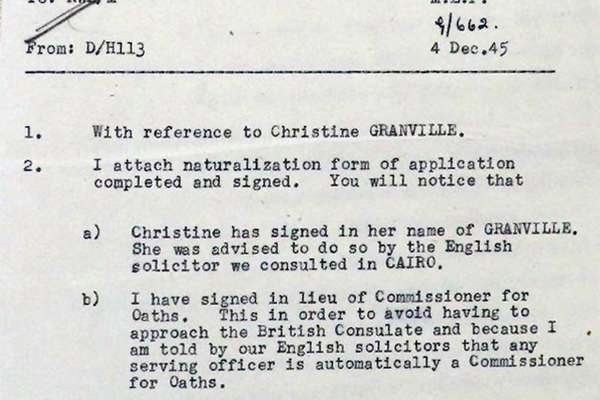In pictures
Women and the Second World War
Our records show the contributions of women to the Second World War from many points of view, ranging from glamorous propaganda, to secret files, to comical insights into human experience. Some saw direct engagement with conflict, while others worked as farm labourers, nurses, spies, or home-makers.
Women in the ATS in gunnery control positions

- Date
- 1939–1946
- Catalogue reference
- INF 3/1235
This image by Marc Stone records the work of some of the women in the Auxiliary Territorial Service (ATS) in the Second World War.
The ATS was the women’s branch of the British Army. Initially women were recruited for driving, cooking and typing but eventually they carried out roles such as manning searchlights and anti-aircraft guns, although they weren’t allowed to fire these.
Over 250,000 women served in the ATS in the Second World War, and it was the largest women’s service during the conflict.
"Up Housewives and at 'em" propaganda poster

- Date
- 1939–1946
- Catalogue reference
- INF 3/219
During the Second World War the British government produced many propaganda campaigns inspiring those ‘at home’ to contribute to the war effort. This included campaigns aimed at changing the way people managed resources in their own homes – from how they shopped, to what they ate, to what they might throw away.
Here waste management – also called ‘salvage’ – is represented as a heroic task in which it was up to women, as home-makers, to lead. The poster was designed by Yates-Wilson.
Biography of agent Natalie or Lily Sergueiew

- Date
- 1943
- Catalogue reference
- KV 2/464
Many women carried out dangerous intelligence work for the allies during the Second World War. This is the front page of the personal file of Natalie or Lily Sergueiew, who worked for the Special Operations Executive (SOE) under the codename ‘TREASURE’.
Before the Second World War, Sergueiew was a journalist working in Paris. She volunteered to provide intelligence to the Germans but in fact worked as a double agent and served the allies by passing on misinformation. This included false information about the troops assembling in the South of England prior to D-Day.
Poem by a land girl: 'My Day'

- Date
- April 1943
- Catalogue reference
- MAF 59/22
During the Second World War, the Women’s Land Army worked in agriculture in the place of men who had joined the armed forces. It was at its largest in 1943 when around 80,000 women classed themselves as ‘land girls’.
Women joined from all kinds of backgrounds, many coming from large cities. They took on a huge variety of work including hoeing, ploughing, rat-catching and working as lumber jacks.
The Land Girl magazine went on sale for 4d. (2 pence) in 1940. It became very popular, helping prevent ‘land girls’ from feeling isolated. This poem by one reader, Ola Trist, was printed in the issue from April 1943.
Drawing of a 'land girl' hitching up a plough to two horses by Laura Knight

- Date
- 1939–46
- Catalogue reference
- INF 3/108
This drawing by artist Laura Knight was commissioned by the Ministry of Information during the Second World War. It shows a 'land girl' hitching up a plough to a team of horses.
Laura Knight had an established career before the war. In 1929 she was made a Dame, and in 1936 she became the first woman to become a full member of the Royal Academy. After the war, Knight took on a unique assignment, painting the war crimes trial at Nuremberg.
This poster is one of many pieces of original wartime propaganda art, produced by many artists in every kind of medium. Their work promoted government campaigns from recruitment and volunteering to recycling and saving fuel.
Featured article
Record revealed
Christine Granville’s application to become a British citizen

Christine Granville, Special Operations Executive agent extraordinaire, was Churchill’s favourite spy. How did this document possibly save her life?